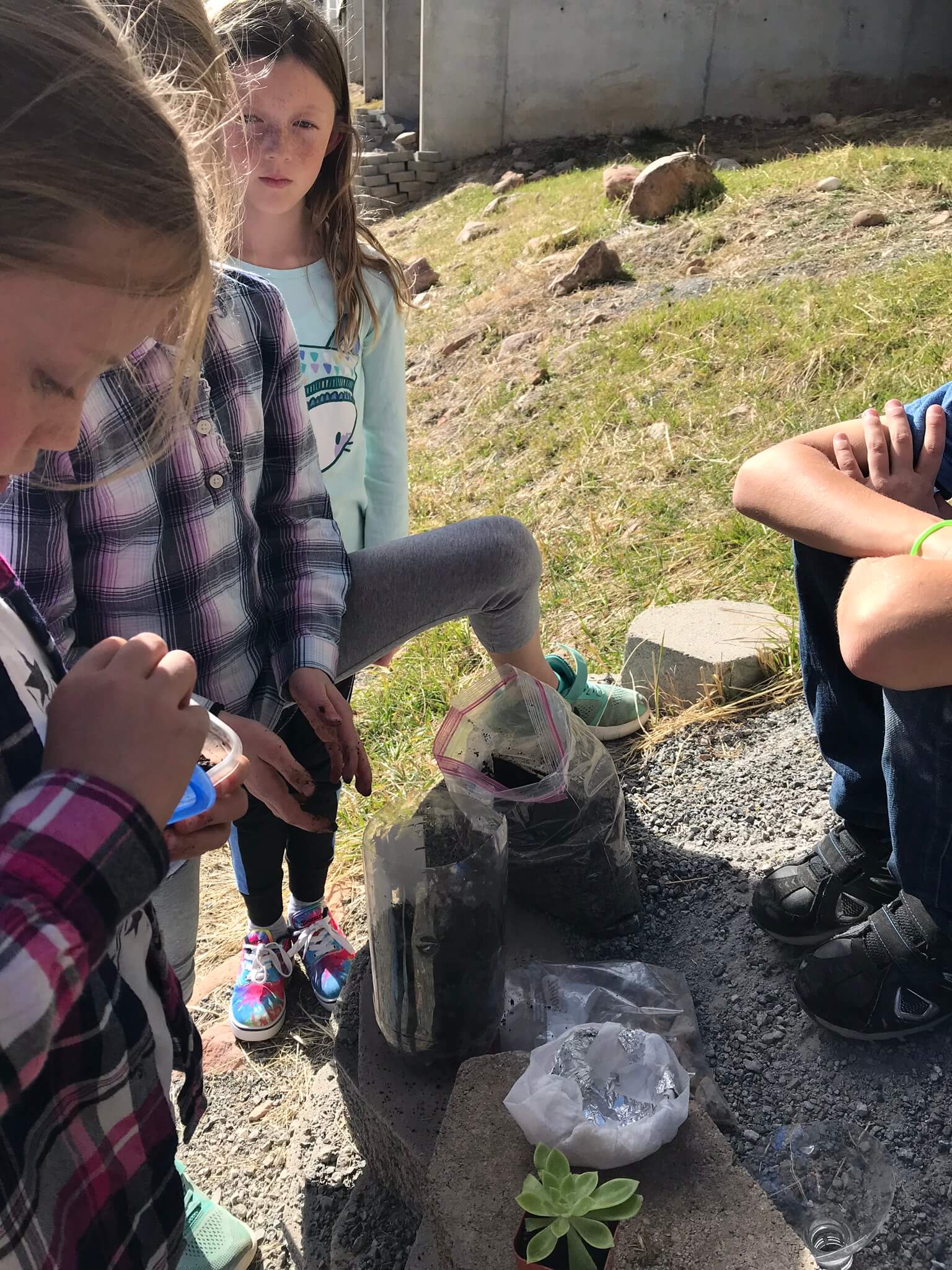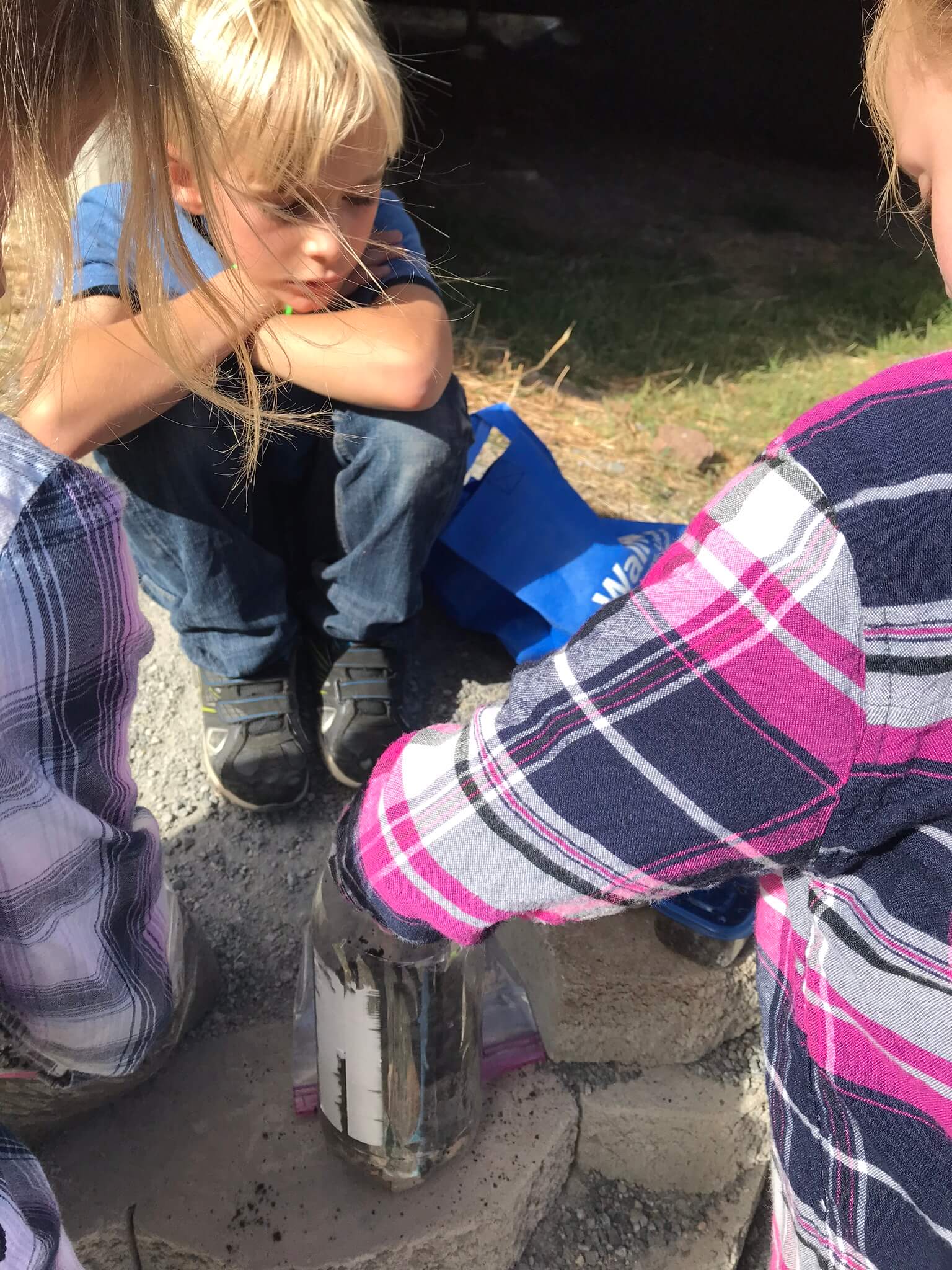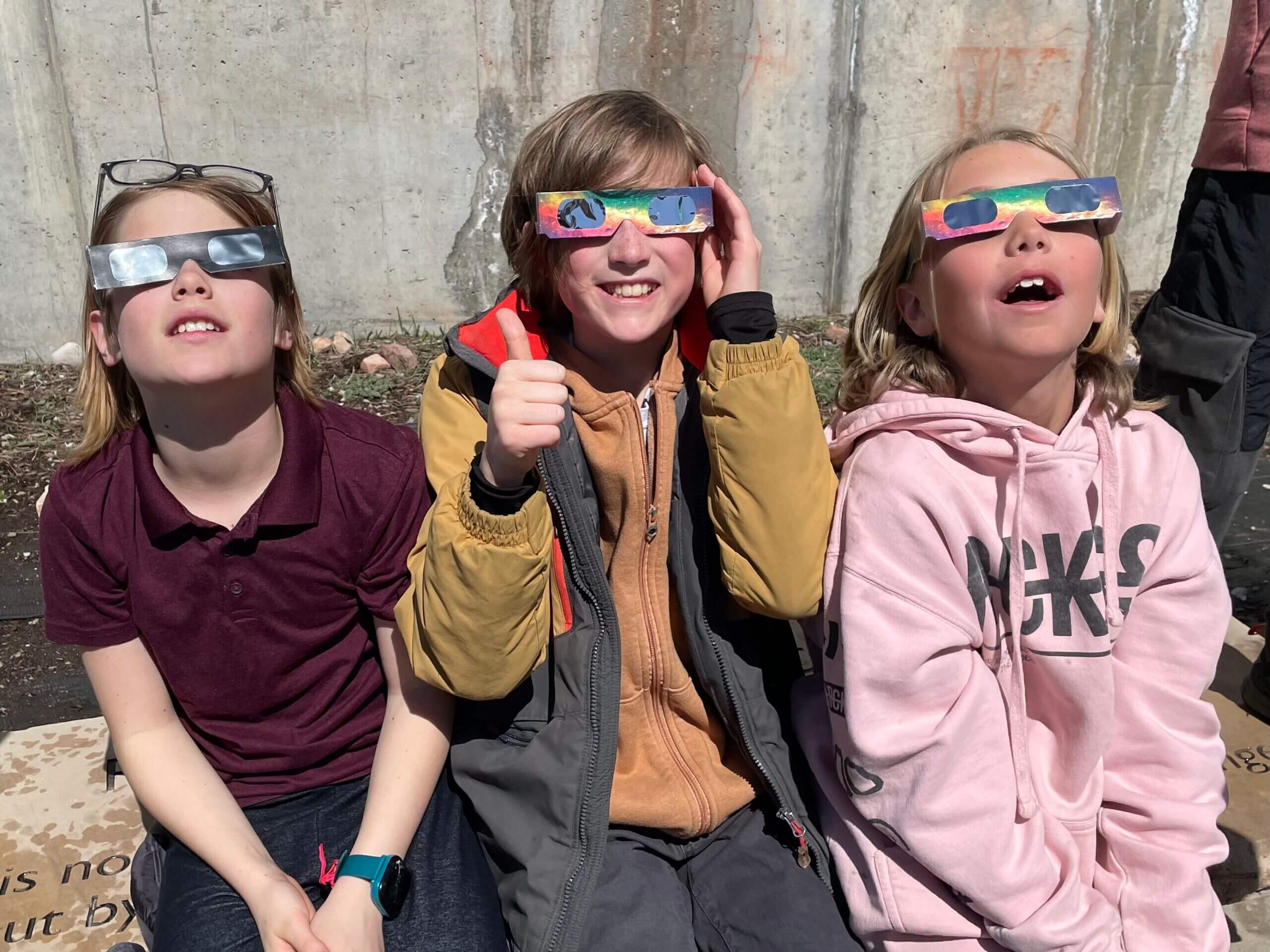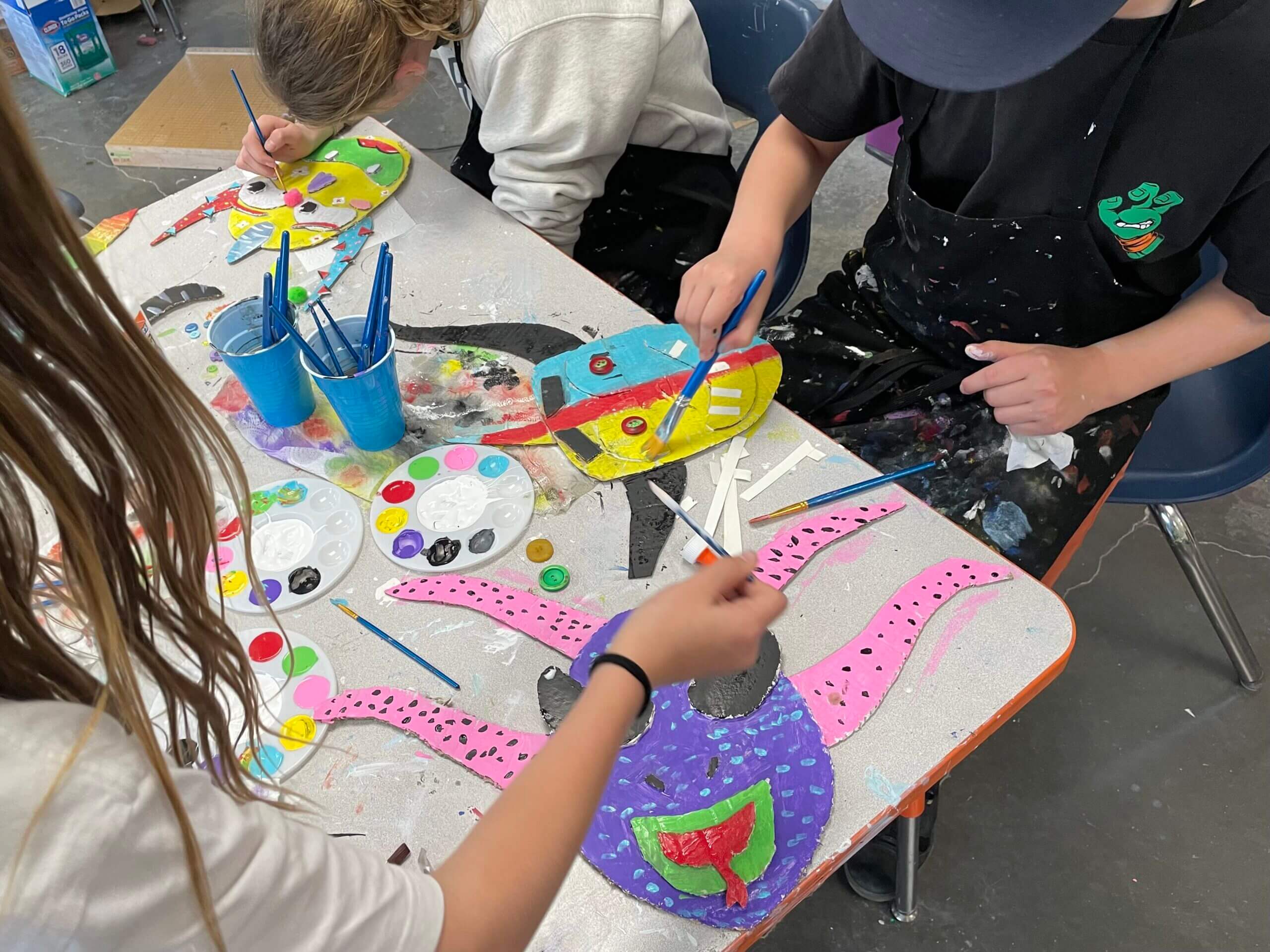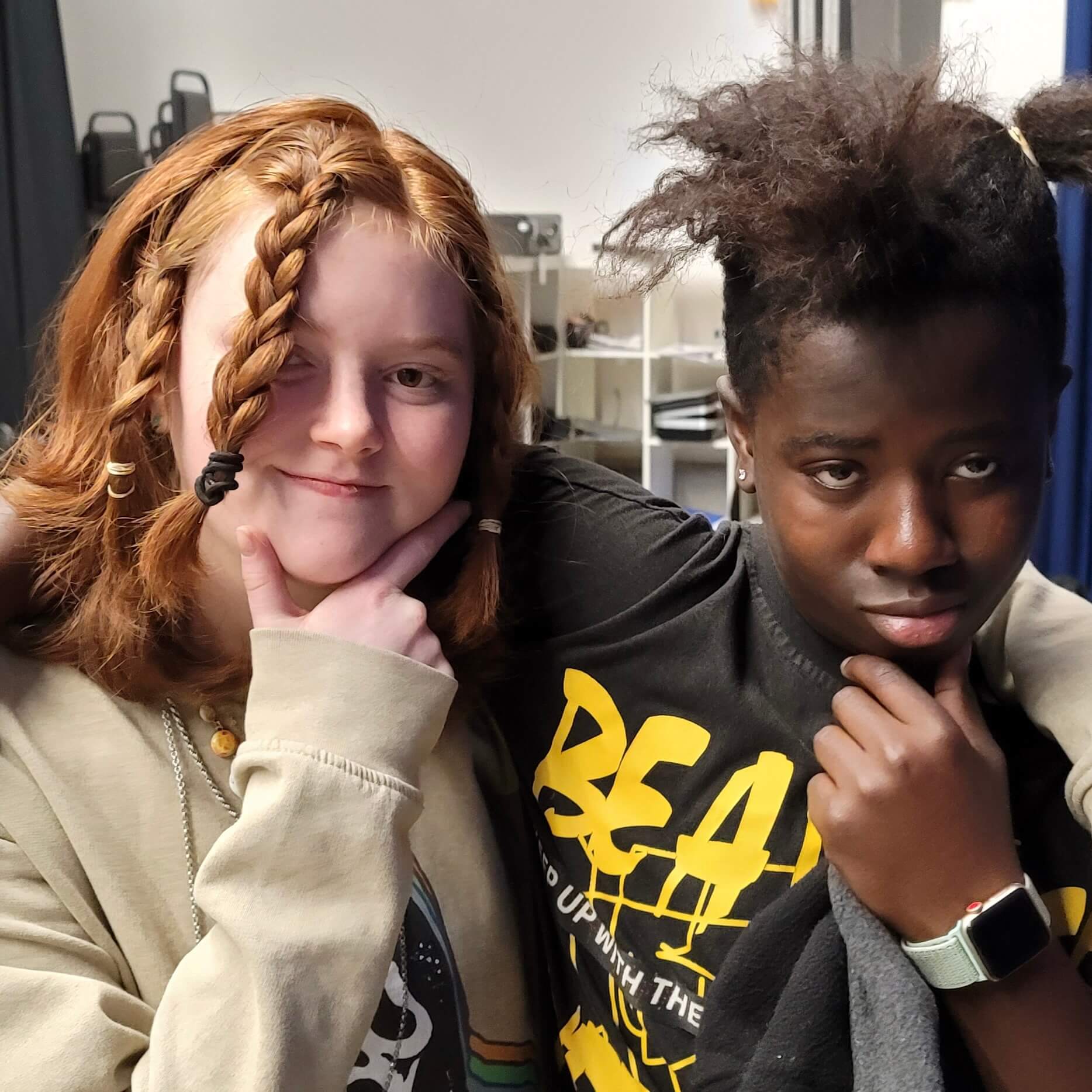On Monday, April 8, WSD observed “The Great American Eclipse” with a schoolwide solar celebration.…
Third grade science students have embarked on a month-long Living Things project. The goal of the project is to provide friendly habitats that sustain life for small creatures and/or plants for 30 days. There are two main parameters for the habitat:
- the maximum size is a 2-litre soda bottle, and
- any creatures must be one inch long or less.
After students learned about living things, their character traits, and their needs, they were put into collaborative teams. Individual members in each team created plans for a creature and/or plant habitat and from those ideas, each group came up with a team plan. A viable plan included the type of creature and/or plant, the materials required, and a drawing of the proposed habitat. Teams then began researching what conditions would best meet the needs of their living thing so that it could thrive.
Research and plans were then presented to classmates. Based on feedback from the class and from Science teacher Roni Ottley, teams were either given approval, asked to revise, or directed to start over.
“In the real world, projects are proposed just like this” offers Ms. Ottley. “Students are given one week to revise and re-present their plans to the class. Some will find that they need to go back to the drawing board.”
Once approved, team plans entered the construction phase. This involved gathering the materials outlined in their design and then collaborating as a team to build the habitat. Now that their small creatures or plants are installed, students have begun recording and submitting weekly updates, tracking success and analyzing problems along the way so they can make adjustments.
Students have learned very quickly the importance of balancing food, air, water, sunlight, and other elements. Too much or too little of any one thing can have tragic consequences. By creating and caring for their living things habitat, third grade students are learning first-hand about the complexities of the natural world and how living and nonliving things interact to create life-sustaining systems. Perhaps most important, students are learning that all living things, no matter how small, are wonders of nature.





